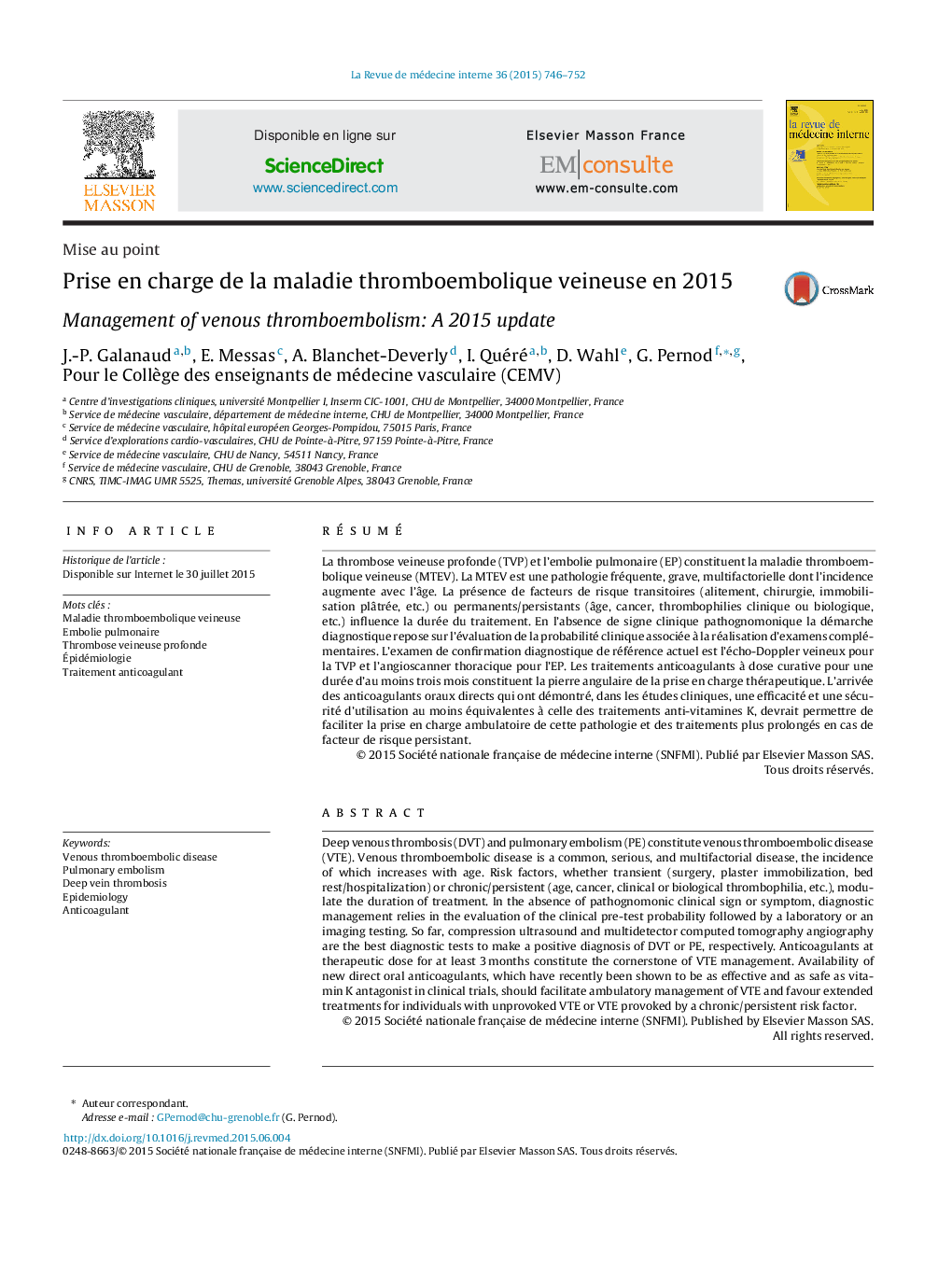| کد مقاله | کد نشریه | سال انتشار | مقاله انگلیسی | نسخه تمام متن |
|---|---|---|---|---|
| 5999788 | 1182350 | 2015 | 7 صفحه PDF | دانلود رایگان |
RésuméLa thrombose veineuse profonde (TVP) et l'embolie pulmonaire (EP) constituent la maladie thromboembolique veineuse (MTEV). La MTEV est une pathologie fréquente, grave, multifactorielle dont l'incidence augmente avec l'âge. La présence de facteurs de risque transitoires (alitement, chirurgie, immobilisation plâtrée, etc.) ou permanents/persistants (âge, cancer, thrombophilies clinique ou biologique, etc.) influence la durée du traitement. En l'absence de signe clinique pathognomonique la démarche diagnostique repose sur l'évaluation de la probabilité clinique associée à la réalisation d'examens complémentaires. L'examen de confirmation diagnostique de référence actuel est l'écho-Doppler veineux pour la TVP et l'angioscanner thoracique pour l'EP. Les traitements anticoagulants à dose curative pour une durée d'au moins trois mois constituent la pierre angulaire de la prise en charge thérapeutique. L'arrivée des anticoagulants oraux directs qui ont démontré, dans les études cliniques, une efficacité et une sécurité d'utilisation au moins équivalentes à celle des traitements anti-vitamines K, devrait permettre de faciliter la prise en charge ambulatoire de cette pathologie et des traitements plus prolongés en cas de facteur de risque persistant.
Deep venous thrombosis (DVT) and pulmonary embolism (PE) constitute venous thromboembolic disease (VTE). Venous thromboembolic disease is a common, serious, and multifactorial disease, the incidence of which increases with age. Risk factors, whether transient (surgery, plaster immobilization, bed rest/hospitalization) or chronic/persistent (age, cancer, clinical or biological thrombophilia, etc.), modulate the duration of treatment. In the absence of pathognomonic clinical sign or symptom, diagnostic management relies in the evaluation of the clinical pre-test probability followed by a laboratory or an imaging testing. So far, compression ultrasound and multidetector computed tomography angiography are the best diagnostic tests to make a positive diagnosis of DVT or PE, respectively. Anticoagulants at therapeutic dose for at least 3 months constitute the cornerstone of VTE management. Availability of new direct oral anticoagulants, which have recently been shown to be as effective and as safe as vitamin K antagonist in clinical trials, should facilitate ambulatory management of VTE and favour extended treatments for individuals with unprovoked VTE or VTE provoked by a chronic/persistent risk factor.
Journal: La Revue de Médecine Interne - Volume 36, Issue 11, November 2015, Pages 746-752
